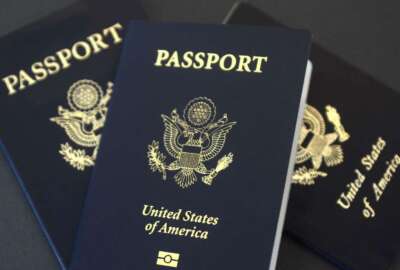

Understaffing everywhere you look is making employees work into overdrive
While Tom Temin is on vacation, please enjoy this Federal Report column pulled from our archives.
For too many federal employees, the job is one long, unremitting equivalent of a treadmill they can’t step off of. My recent series on the travails of the Justice Department’s Bureau of Prisons explored the essential problem leading to the Bureau’s low employee satisfaction: not enough people. The result is overtime — lots of overtime, often involuntary. Collateral damage occurs in the way people with other jobs are dragooned into correctional officer duty.
Bureau of Prisons has lots of company. Conditions along the U.S. border with Mexico have been so bad for so long, they are negatively impacting Customs and Border Protection and Immigration and Customs Enforcement employees’ health and morale. Those aren’t my words. They headline an audit from the Homeland Security Department Office of Inspector General.
As Acting Deputy IG Kirsten Bernard told me, the number of migrant encounters is simply more than the agents can handle. As part of their audit, Bernard and her staff personally met with some 200 CBP and ICE agents. A survey of them produced 9,300 responses. Most of them felt that staffing at their duty stations is insufficient. And that it takes a toll.
The report stated: “CBP’s and ICE’s current method of managing law enforcement staffing is unsustainable. CBP and ICE workloads have grown significantly due to factors beyond the Department of Homeland Security’s control, namely increasing border encounters and travel volume.
The result? Lots of overtime, often mandatory. Agents lose control of their work-life balance. If headquarters cares, the agents don’t hear it. Like their counterparts at the Bureau of Prisons, ICE and CBP managers resort to detailing people to front-line law enforcement duty, often on short notice and often requiring last-minute travel far away. Auditors consistently heard of low morale, stress, exhaustion and fatigue.
These officers have something in common with correctional officers in BOP. They’re dealing with live people in stressful situations. Migrants on cable TV look like an undifferentiated blob rolling into the United States. Close up, agents must deal individually with people ranging from impoverished, hard-working mothers fleeing gang violence, to gang members themselves who should never set foot in the United States.
“Sufficient law enforcement staffing is key” to an effective border operation, the IG says. Unlike BOP, which can’t seem to fill its authorized funded positions, ICE and CBP are generally fully staffed. Fully staffed per the budget and authorized headcount, though, is insufficient for the task. Management told the IG that staffing levels and funding are, well, complicated. After all, they’ve got to deal with the White House first.
Congress has given CBP and ICE what it’s asked for since 2019. But the agencies haven’t grown staff at the border enough. The number of Border Patrol Agents on the southwest border has remained static at about 16,000 since 2019, to deal with average monthly encounters that grew from 71,000 to 184,000.
All those unaccompanied minors? Another insufficiently-staffed operation deals with placing them in safe facilities. That would be the Office of Refugee Resettlement, a small agency in the Department of Health and Human Services. The HHS inspector general found that placements during busy times exceeded the agency’s own 24-hour policy and lacked the required paperwork. One reason: a “lack of intake specialist staff.” The agency said it has hired more intake specialists.
Why does executive leadership at agency after agency drive its people crazy?
At the State Department factory known as the Bureau of Consular Affairs, they’re racing to hire people, automate, do anything to keep up with an expected demand for 25 million passports this year. As Jory Heckman reported, a big headache is loss of staff through a freeze and attrition. Because the passport operation is fee-funded, it had a hiring freeze when revenue dried up in the pandemic. It can take up to 13 weeks to get a passport now. And as Assisant Secretary Rena Bitter told Congress, passport people aren’t just schlubs pushing paper around.
No, they don’t physically stamp out the blue booklets. The Government Publishing Office does that on machines. The people have to make sure the applications are worthy.
“These are national security positions,” Bitter said. Whatever they are, the people find themselves working harder and harder to maintain a semblance of good — what’s the word now? — customer experience.
The first rule of good customer experience: Provide a good employee experience. No wonder human resources management endures as an across-the-government challenge.
In 1910, Rep. Robert F. Broussard introduced a bill to Congress to allow the importation of hippos into Louisiana.
Source: Smithsonian Magazine
Copyright © 2025 Federal News Network. All rights reserved. This website is not intended for users located within the European Economic Area.
Tom Temin is host of the Federal Drive and has been providing insight on federal technology and management issues for more than 30 years.
Follow @tteminWFED

